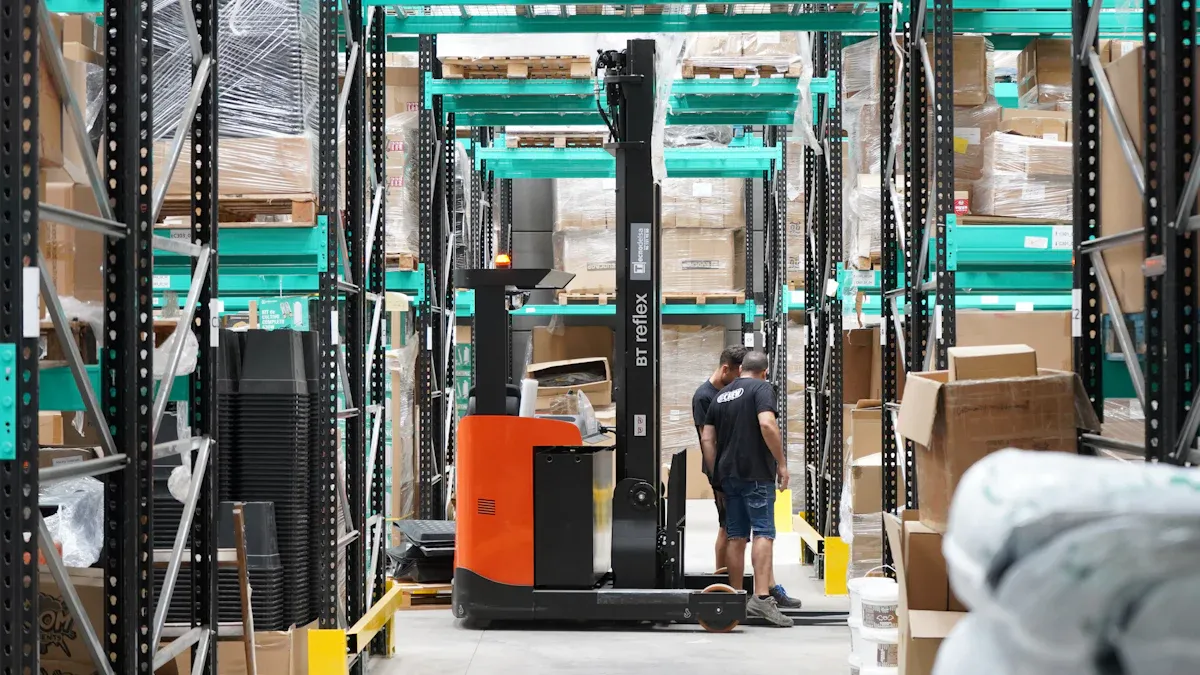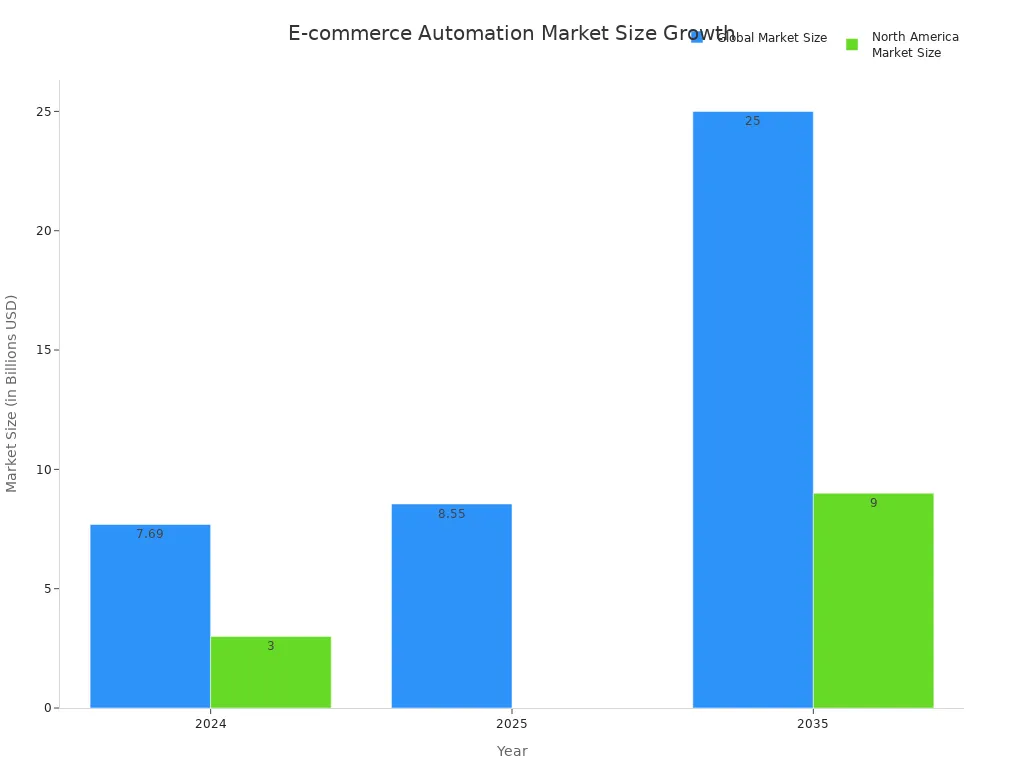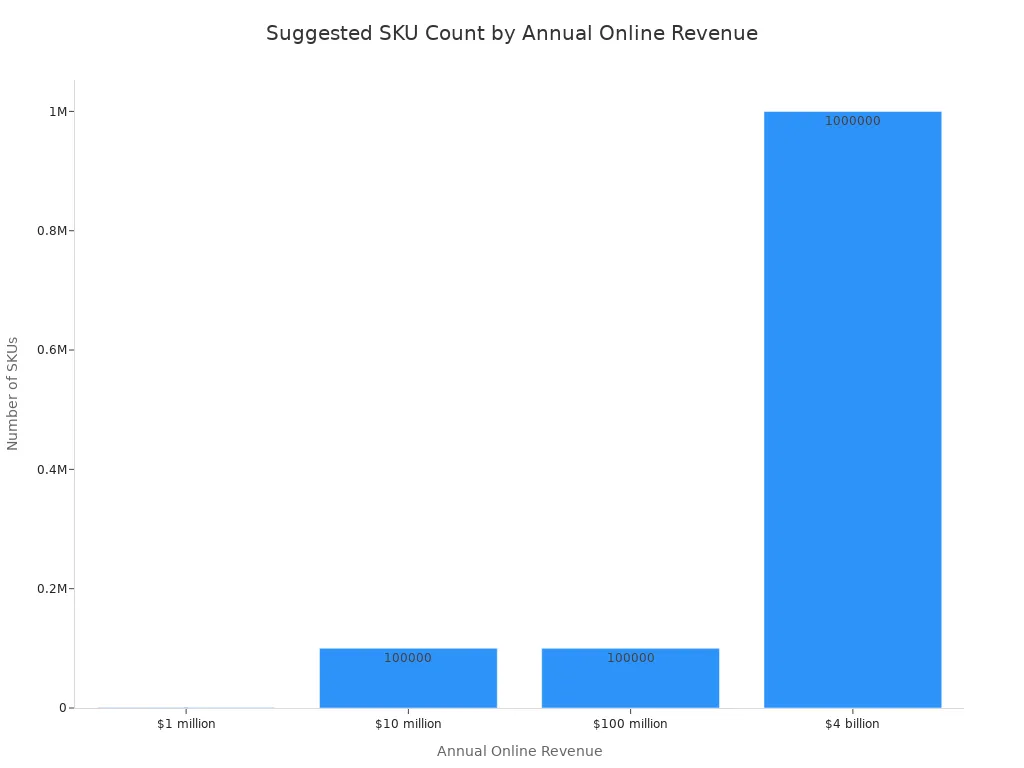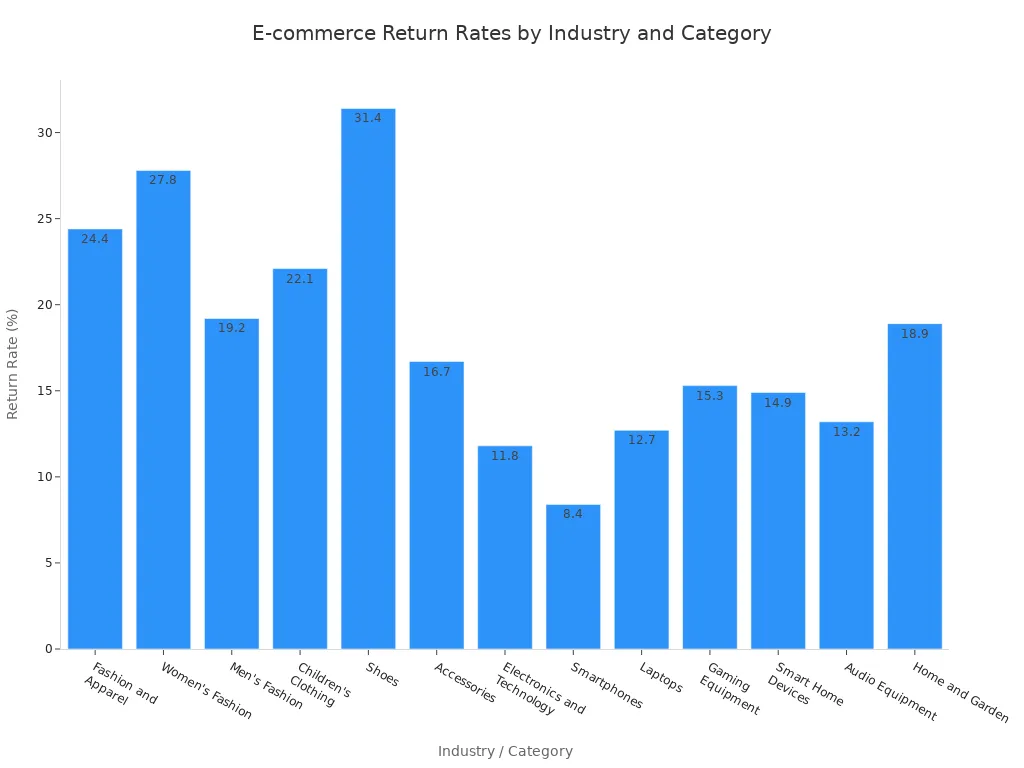How to Find the Best E-commerce Automation Solutions

You see the explosive growth in ecommerce automation. The market is vast, making it hard to choose the right tools. With 66% of businesses having automated at least one process, you know that effective automation is no longer optional for e-commerce.

This guide simplifies your decision. It provides a framework to find the best e-commerce automation solutions for reducing manual tasks. An automated system, from a Sobot call center to Sobot AI, can transform your ecommerce business. This journey into automated e-commerce processes is a strategic move for growth.
Step 1: Assess Your E-commerce Automation Needs

Before you can choose the right tools, you must first understand your business's unique challenges. This initial assessment is the foundation for selecting an effective ecommerce automation solution. A clear picture of your needs ensures your investment in automation delivers real results.
Analyze Order Volume and Velocity
First, look at your order data. How many orders do you receive daily, weekly, and monthly? Note the peaks during holidays or sales events. High-volume order fulfillment requires a robust system for automated order fulfillment. Understanding your order velocity helps you see if your current process can keep up. If your team struggles during busy times, it is a clear sign you need automation. This analysis will guide your search for a scalable ecommerce automation platform.
Evaluate Inventory and SKU Complexity
Next, evaluate your inventory. The number of Stock Keeping Units (SKUs) you manage directly impacts your fulfillment needs. A small e-commerce store might have under 1,000 SKUs, but established businesses can manage over 200,000. As your revenue grows, so does your inventory complexity.

A high SKU count creates significant inventory management challenges:
- Increased risk of stockouts or overstocking your inventory.
- Difficulties in accurately forecasting demand for each product.
- Higher costs from holding excessive safety stock.
An automated inventory management system is crucial for handling this complexity and maintaining efficiency.
Map Your Current Order Fulfillment Workflow
Now, map your entire order fulfillment process from checkout to delivery. Identify the manual tasks that consume the most time. Order fulfillment as a whole is often the most time-consuming part of e-commerce. Tasks like manual order processing, data entry, picking, packing, and shipping are repetitive and costly. An automated system can handle these jobs. Automating the fulfillment process is key to reducing errors and freeing up your team for more strategic work. Your map will reveal the biggest bottlenecks in your fulfillment operations.
Define Your Fulfillment and Growth Goals
Finally, define your goals for fulfillment and growth. Do you want to reduce shipping errors, speed up order processing, or expand into new markets? Your goals will determine the type of ecommerce automation you need. For example, if your goal is faster delivery, you need automated order fulfillment that integrates with multiple carriers. Setting clear objectives for your fulfillment makes it easier to find an automated solution that supports your e-commerce business's long-term vision. This strategic approach to automation ensures you choose a system that grows with you.
Step 2: Identify Essential Features for Ecommerce Automation
After assessing your needs, you can identify the essential features your business requires. The right ecommerce automation software should solve your specific problems and support your growth. Look for a solution that offers a powerful combination of features to streamline your entire operation, from inventory management to customer service.
Real-Time Inventory Management
Effective inventory management is the backbone of a successful e-commerce business. Without it, you risk disappointing customers with stockouts or tying up capital in overstocked products. Real-time inventory management gives you a live, accurate view of your stock levels across all sales channels and warehouses.
This visibility is critical. Advanced technologies like RFID and real-time analytics help you understand your inventory levels and make decisions based on actual data. This data-driven approach helps you avoid common inventory pitfalls. For example, retailers that adopt real-time tracking see significant improvements.
- A 37% drop in stockouts, ensuring customers can always buy what they want.
- A 29% reduction in overstock, freeing up cash and warehouse space.
- Enhanced operational efficiency and higher customer satisfaction.
An automated inventory management system with real-time inventory tracking is essential. It syncs your inventory automatically after every sale, return, or restock. This automation ensures your e-commerce platform always displays accurate stock information, preventing overselling and improving the customer experience.
Automated Order Fulfillment and Shipping
The order fulfillment process contains many repetitive tasks. Manual order processing is slow and prone to human error. The best e-commerce automation solutions for reducing manual tasks will transform your fulfillment operations. An automated fulfillment system handles the entire workflow from the moment a customer clicks "buy."
This automation creates a seamless order fulfillment journey. Here is how a typical automated order fulfillment process works:
- Order Placement: The system instantly captures all order details when a customer places an order. No manual data entry is needed.
- Order Verification: It automatically checks for fraud, verifies stock availability, and confirms payment.
- Inventory Update: The system allocates items to the order and updates your inventory levels in real time across every e-commerce platform.
- Order Routing: It sends the order to the best warehouse for fulfillment based on inventory location and the customer's address.
- Picking and Packing: Your warehouse team receives automated, optimized instructions for picking items efficiently.
- Carrier Selection: The system compares shipping options and automatically chooses the best carrier based on cost and delivery speed.
- Shipping Label Generation: It automatically generates shipping labels, invoices, and customs forms, completing the automated order fulfillment cycle.
This level of automation ensures smooth order processing, reduces shipping errors, and significantly increases your time efficiency. It allows your team to manage a higher volume of orders without added stress, making automated order fulfillment a cornerstone of scalable ecommerce.
Omnichannel Customer Communication
A positive customer experience goes beyond fast shipping. Today’s shoppers expect seamless support across every channel they use. Omnichannel communication unifies your customer interactions from email, live chat, social media, and messaging apps like WhatsApp into a single, cohesive conversation. This strategy is incredibly effective. Companies with strong omnichannel engagement retain 89% of their customers, compared to just 33% for companies with weak strategies.
Pro Tip: Digitizing your customer service with proactive omnichannel interactions can boost customer satisfaction by as much as 33%.
AI-powered tools are essential for delivering this experience at scale. For instance, solutions from providers like Sobot offer an AI-powered Chatbot and Live Chat that can integrate directly with your e-commerce platform.
- Provide 24/7 Support: An AI chatbot answers common customer questions about order tracking, returns, and product details anytime, day or night. This frees up your human agents for more complex issues.
- Unify Communication: These tools bring all customer messages into one inbox. An agent can see a customer's past emails and recent live chat questions, providing context for better service.
- Boost Satisfaction: By providing instant, accurate answers and seamless support, you can improve customer satisfaction by over 30%.
Modern solutions also offer integrations with major platforms like Shopify and Amazon. This gives you a complete view of all customer interactions, helping you deliver personalized and efficient support that builds loyalty.
Returns Management Automation (RMA)
Returns are an unavoidable part of e-commerce. The average return rate is rising, and it varies significantly by product category. Managing this process manually is expensive and time-consuming.

Automated returns management (RMA) systems streamline this entire workflow. An automated system provides customers with a self-service portal to initiate returns, print labels, and track their status. This automation offers several key benefits:
- Reduces Processing Costs: AI-powered automation can instantly classify returned items, identify defects, and update inventory, reducing manual labor and bottlenecks.
- Improves Customer Experience: A simple, transparent returns process makes customers more confident in their purchases.
- Recovers Value: Automated workflows help you process returns faster, getting resellable items back into your inventory quickly.
Implementing automated returns management turns a costly problem into a competitive advantage, enhancing both efficiency and customer loyalty.
Reporting and Demand Forecasting
Finally, you cannot improve what you do not measure. Powerful ecommerce automation tools come with robust reporting and analytics features. These tools provide deep insights into every aspect of your fulfillment operations, from sales and order tracking to inventory turnover.
Demand forecasting is one of the most valuable features. Using historical sales data and market trends, these tools predict future demand for your products. This allows you to make smarter inventory purchasing decisions. To measure your success, you should focus on a few key KPIs:
| KPI | What It Measures | Why It's Important |
|---|---|---|
| Forecast Accuracy | The difference between your forecasted sales and actual sales. | High accuracy (aiming for 90-95% on key items) reduces costs from overstocking and lost sales from stockouts. |
| Bias | Whether your forecasts are consistently too high or too low. | Identifying and correcting bias helps you create more reliable forecasts over time, leading to better inventory planning. |
By leveraging automated reporting, you gain the data needed to optimize your order fulfillment, manage inventory effectively, and plan for sustainable growth. This makes your ecommerce automation solution a strategic asset for your business.
Step 3: Comparing the Best E-commerce Automation Solutions for Reducing Manual Tasks

Once you know your needs and desired features, you can start comparing vendors. This step is about looking past the marketing promises to find a true partner for your business. A careful comparison ensures you select one of the best e-commerce automation solutions for reducing manual tasks that fits your budget and integration needs.
Evaluate Integration Capabilities
Your ecommerce automation software cannot work in a silo. It must connect seamlessly with the other tools you use every day. Strong integration capabilities are the glue that holds your tech stack together, enabling automated workflows and a single source of truth for your data. Without them, you risk creating more manual work, not less.
Poor integrations lead to serious problems:
- Data Inconsistency: Information gets scattered across systems, causing errors in customer records and inventory counts.
- Operational Slowdowns: Your team wastes time manually transferring data between your e-commerce platform and other tools.
- Frustrating User Experience: Disconnected systems create friction for your team and customers, hurting productivity and satisfaction.
A powerful solution should offer a wide range of pre-built integrations. When evaluating vendors, check if they connect with the systems that are critical to your fulfillment operations. Key integration categories include:
- E-commerce Platforms: Direct connections to Shopify, Amazon, BigCommerce, and others are essential for syncing order and inventory data.
- Warehouse & Inventory Management (WMS): Integrations with WMS and inventory management software help you visualize inventory and streamline automated order fulfillment.
- Payment Gateways: Connections to Stripe, PayPal, and other processors ensure smooth and secure transactions.
- Customer Relationship Management (CRM): Syncing with your CRM gives you a complete view of customer interactions and order history.
- Marketing Automation: Linking to tools like Klaviyo or HubSpot helps you create automated, personalized marketing campaigns based on purchase behavior.
Your goal is to create a fully connected ecosystem. The right ecommerce automation tool makes this possible, ensuring data flows freely and your automated processes run without a hitch.
Compare Pricing and Total Cost of Ownership
Price is always a factor, but the sticker price rarely tells the whole story. To make a smart financial decision, you need to understand both the pricing model and the Total Cost of Ownership (TCO).
First, familiarize yourself with common pricing structures for ecommerce automation software.
| Pricing Model | How It Works | Best For |
|---|---|---|
| Subscription (Flat-Rate) | You pay a fixed monthly or annual fee for access to the software. | Businesses that need a predictable, stable budget for their tools. |
| Tiered Pricing | The vendor offers multiple pricing levels with different features, user limits, or order volumes. | Growing businesses that want a solution that can scale with them. |
| Per-Transaction | You pay a small fee for each order processed or action completed by the software. | Businesses with fluctuating order volumes or those who want to pay based on usage. |
Beyond the subscription fee, you must calculate the TCO. This includes all the hidden expenses associated with implementing and running the software.
Note: Hidden costs can significantly increase your investment. Always ask vendors for a complete breakdown of potential fees.
Consider these potential costs:
- Setup and Implementation: Fees for installation, data migration from your old system, and initial staff training.
- Operating Costs: Ongoing expenses like support contracts, maintenance fees, and payment processing charges.
- Growth and Scaling Costs: Expenses for adding more users, upgrading to a higher tier for more features, or handling increased order volume.
- Exit Costs: Fees you might incur if you decide to switch providers, such as contract termination penalties.
A thorough TCO analysis helps you avoid surprises and ensures the solution you choose is financially sustainable for your e-commerce business long-term.
Investigate Customer Support and Onboarding
Even the best software is useless without good support. When you are automating critical parts of your business like order fulfillment and inventory, you need a responsive and knowledgeable support team to help you. Before you commit, investigate the quality of a vendor's customer support and onboarding process.
A smooth onboarding experience is crucial for getting your team up to speed quickly. It sets the foundation for a successful partnership. Here are some questions to ask potential vendors:
- What does your onboarding process look like?
- Do you provide dedicated training for our team?
- What kind of support channels do you offer (e.g., phone, email, live chat)?
- What are your average response and resolution times for support tickets?
- Is there a knowledge base or community forum for self-service help?
Excellent support is a sign that a company is invested in your success. Look for a partner who will be there to help you resolve issues and get the most value from your automation investment.
Review Case Studies and User Testimonials
Finally, look for proof. Case studies and user testimonials show you how the software performs in the real world. They provide concrete evidence of the value a solution can deliver, moving beyond features to focus on results.
When reviewing case studies, look for specific, measurable outcomes. Vague claims are not helpful. You want to see hard numbers that demonstrate a clear return on investment (ROI). Successful case studies often highlight metrics like:
- Cost Reduction: Savings in labor, shipping, or operational overhead.
- Efficiency Gains: Improvements in order processing speed, picking accuracy, or team productivity.
- Revenue Growth: Increases in conversion rates, customer lifetime value, or sales volume.
- Payback Period: The time it takes for the business to recoup its initial investment.
For example, consider the story of J&T Express, a global logistics leader. The company struggled with inefficient customer communication in Southeast Asia, leading to delivery delays and high costs. By partnering with Sobot to implement an automated WhatsApp solution, J&T Express transformed its fulfillment process.
The automated system sent messages for address confirmations and delivery updates. This simple automation produced powerful results:
- Delivery rates increased by 35%.
- Overall costs were reduced by 50%.
- Cash-on-delivery collection improved by 40%.
This example, detailed in a Sobot case study, demonstrates the immense impact of choosing the right automation partner. It shows how targeted automation can solve specific business challenges and deliver a significant ROI. By reviewing similar stories, you can find a solution with a proven track record of helping e-commerce businesses like yours succeed.
Step 4: Making Your Final Decision and Implementation
You have compared vendors and are ready to choose. This final step turns your research into action. It involves testing the software, negotiating terms, and planning a smooth rollout for your team. A careful approach here ensures your new automation solution delivers long-term value.
Request and Evaluate Software Demos
A software demo is your chance to see the tool in action. You should prepare specific questions for the vendor. This helps you confirm the e-commerce platform aligns with your goals. During the demo, evaluate how the software handles key tasks.
- Inventory Management: Does it offer real-time inventory tracking and demand forecasting?
- Order Processing: Can it automate order processing and speed up your automated order fulfillment?
- Ease of Use: Is the interface user-friendly for your team?
- Integration: Will it connect seamlessly with your existing e-commerce platform and tools?
A good demo shows you exactly how the automated system will improve your fulfillment operations.
Run a Pilot Program or Free Trial
Before you commit fully, run a pilot program. This lets you test the automation software in a real-world setting. Start with a small part of your operations. Define clear goals and Key Performance Indicators (KPIs) to measure success. You can track metrics like order processing time, inventory accuracy, and customer satisfaction. This trial period helps you find any issues before a full-scale launch. It proves the value of the automation and builds confidence in your decision.
Negotiate Contracts and Service-Level Agreements
Your contract is a critical document. You must negotiate a Service-Level Agreement (SLA) that protects your business. The SLA defines the vendor’s responsibilities.
Important: Pay close attention to clauses on data ownership, security protocols, and performance standards. These terms ensure your data is safe and the service is reliable.
Your SLA should clearly outline service availability, support response times, and penalties for non-performance. A strong agreement provides peace of mind for your e-commerce business.
Plan for Smooth Implementation and Training
A successful implementation requires a clear plan. Many businesses face challenges like employee resistance or data integration problems. You can avoid these issues with proper planning. Your plan should include comprehensive training for your team. Tailor the training to different roles to ensure everyone understands how the new automated system improves their workflow. Good training is key to high user adoption and maximizing the efficiency of your new automated order fulfillment and inventory management system. This planning makes the transition to your new e-commerce platform smooth.
You now have a four-step framework to find the best e-commerce automation solutions for reducing manual tasks. This process of assessing, identifying, comparing, and deciding helps you choose the right tools. The best ecommerce automation is the one that fits your unique fulfillment needs and e-commerce goals. This strategic automation delivers powerful results. Businesses using this kind of automation see an average 544% ROI over three years. Use this guide to make a confident investment in your automated fulfillment operations. Explore proven ecommerce automation solutions from providers like Sobot to begin your automated e-commerce journey.
FAQ
What is the main benefit of e-commerce automation?
You can significantly reduce manual tasks in your fulfillment process. This leads to fewer errors, faster order processing, and lower operational costs. Your team gains more time to focus on growing the business instead of managing repetitive work.
How much do e-commerce automation solutions cost?
Pricing varies based on features and order volume. Many vendors offer tiered plans that scale with your business. You should focus on the return on investment (ROI). Good automation pays for itself by increasing efficiency and sales.
Can a small business use automation?
Yes. You can start small. Automate one key area first, like customer service with an AI chatbot or inventory updates. As your business grows, you can expand your use of automation to other parts of your operations.
What is the best way to automate customer communication?
You should use an omnichannel platform. This unifies channels like email, live chat, and WhatsApp into one system. It helps you provide fast, consistent support. This improves customer satisfaction and builds loyalty for your brand.
See Also
Best Live Chat Solutions for E-commerce Businesses This Year
Elevate Your Sales: E-commerce Live Chat Software's Impact
Selecting the Ideal Chatbot Software: A Comprehensive Buyer's Guide
Comparing the Top 10 Live Chat Tools: Shopify and Rivals
Your Essential Guide to Omnichannel Call Center Software Selection
